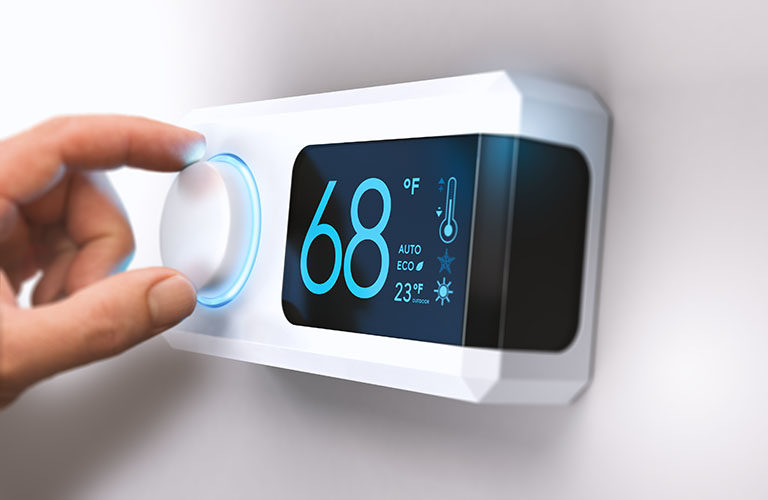Mitigating Risk in the Past, Present and Future
Building professionals have a role to play in helping to accelerate the energy transition and decarbonize our buildings.

When the Great Fire of London destroyed much of the city in early September 1666, coffee shops emerged as a gathering place for transacting business. Edward Lloyd opened Lloyd’s Coffee House, which became a significant meeting place in England in the 17th and 18th centuries.
It was popular with sailors, merchants and shipowners, and Lloyd catered to them by renting out tables known as boxes for business meetings, and providing reliable shipping news. The business community gathered there to discuss maritime insurance, shipbroking and foreign trade. This led to the establishment of the insurance market Lloyd’s of London, Lloyd’s Register, Lloyd’s List and several related businesses.
From these humble beginnings, Lloyd’s developed continuously for more than 300 years and is among the world’s leading marketplaces for insurance and reinsurance. Now a world authority on risk, Lloyd’s said in October, using highly progressive prediction tools, it estimates that climate change-fuelled extreme weather events could result in around $5 trillion in economic losses over the next five years as crops fail and water and food shortages escalate.
The range of the analysis was from $3 trillion to $17.6 trillion. Meanwhile, a model published the same month in Nature Communications, a scientific journal, estimated climate change extreme weather costs at $2.86 trillion in the first two decades of this century.
Extreme Weather: An Actionable Economics Metric
These reports indicate two things: the impact of fossil fuels is no longer regarded as a nebulous impact that can’t be calculated very precisely, and decision-makers are interested in the facts and prepared to act on them.
Looking ahead to the holiday season and a new year, some will be happy to see the end of 2023, with its extreme weather disasters, wars and other worrying global events. Climate scientists seem to be always looking ahead with dread, but the trends were truly off the charts this year.
Meanwhile, climate solutions writers like me are happy to note that the energy transition is ramping up quickly in the areas of electric vehicles, power generation and the built environment. Some economists described the 2020s as the “disruption decade,” and I think it is beginning in earnest in 2024 as clean energy adoption continues to pass all the tipping points. By 2035, we are likely to see significant drops in carbon and methane in our atmosphere.
Sam Butler-Sloss and Kingsmill Bond of the Rocky Mountain Institute think tank published guidance this year for investors, warning that they should not assume the energy transition will be slow and gradual, and documented solid evidence it was already on pace for heady velocity. It walked investors through several indicative charts and eight errors commonly made by pundits and amateur analysts. They included linear thinking, lagging indicators such as stocks rather than flows, narrow assumptions and others.
Conservation: A Key Emissions Strategy
One common prediction error relating strongly to building professionals is the tendency to pay little attention to energy efficiency. For example, the International Energy Agency notes that since 2010, improvements in energy intensity have averaged 1.7% a year, saving about 10 times as much primary energy as solar and wind additions. In 2022, energy efficiency saved more than three times as much primary energy as the growth of solar and wind.
Meanwhile, renewables get nearly all the media headlines.
Among the unsung heroes in conservation, in addition to insulation, tight building envelopes and better windows, is smart technology. Smart homes, building controls, intelligent load analysis and load management software for utilities and microgrids — all have proven, measurable track records for enabling significant energy savings and greenhouse gas (GHG) reductions through energy network sharing, optimization and demand response (DR) programs.
Many of us are not aware that DR programs will likely be a huge opportunity in the immediate future to help building professionals, owners, microgrid operators and power utilities reach energy and GHG reduction targets, and acquire incentives and funding.
Municipal and state regulations and code changes targeting carbon emissions in buildings are being tightened in most places in the United States and beyond. As we know, New York is one of the trailblazers in this area, and details on its progress in general, and its use of DR programs in particular, are instructive.
Beginning in January 2024, some 30,000 to 50,000 New York City building owners must have completed upgrades to comply with Local Law 97 (LL97) or face very steep fines that make noncompliance a bad business decision. It applies to buildings exceeding 25,000 square feet and building complexes exceeding 50,000 square feet.
However, the powerful property industry has already negotiated a two-year grace period during which the fines will not be enforced against those demonstrating good faith efforts to upgrade. The law is part of New York’s Climate Mobilization Act of 2019, which includes an interim goal (on the way to zero emissions) to cut the city’s carbon by 40% over the next six years.
Fines. LL97 will fine violators in three categories:
Failure to file a report — $0.50 per building square foot, per month
Exceeding emissions limit — $268 for each metric ton over the building’s established limit
Providing false statements — $500,000
For example, a 50,000-square-foot, multifamily residential building emitting 400 metric tons of carbon would be 72.5 metric tons over its 2024-2029 targets — and pay a fine of $19,430 each year. If it failed to report, it would be 12 months x $0.50 = $25,000.
Demand Response Technology
Owners and management will try to educate tenants about necessary upgrades and encourage them to play an active role in their building’s energy transition.
There are split incentives for utilities, owners and tenants of multifamily properties and DR platforms are helpful to all. When electricity usage across a community spikes, utility companies are often forced to turn to polluting, fossil-fuel–powered peaker plants (peaking power plants) to meet the excess demand. This leads to increases in carbon emissions, electricity costs and local pollution.
DR technology and pricing programs have proven to reduce energy consumption during peak periods. Some allow utilities and grid operators to directly tap into participating customer assets, such as energy storage systems, to support the grid. Others use customer engagement, such as device alerts, to encourage voluntary energy reductions to help lower the peak.
Tenants and owners can receive direct cash payments from utility companies for participating. Residents often shift energy consumption during peak demand times by turning off a few lights or raising thermostats by a few degrees during warm weather. These actions add up quickly when multiplied across a given region. They help balance the strain on the grid and reduce the need for dirty, expensive peaker plants.
Automated Virtual Power Plants
Automated use of DR tech is increasingly being deployed to activate smart home devices at scale in apartments, condos and co-ops to create virtual power plants (VPPs). Residents in the same building, community or territory using the same DR platform automatically support the grid during times of high demand (they can temporarily opt out when it’s inconvenient). Utility companies cut costs and emissions and share benefits with participants.
DR tech and VPPs also allow utility companies and building owners to compile data to help them understand how energy is being used, fine-tune schedules, assess impact, etc.
A partnership was announced this year to help fund and create more VPPs in New York and New Jersey. Logical Buildings is a smart building software and solutions company and Keyframe is its investment partner. They established a fund of $110 million to create VPPs in the two states. Funds will support technology installations and software commissioning in multifamily projects and be repaid through energy savings and grid revenue. The news release said the arrangement was the first of its kind. Let’s hope it inspires many others.
By the time you read this column, I will be completing a road trip down the West Coast (in an electric vehicle) to visit some co-authors of my new book, due out in spring 2024. Three of them worked together in the early days of VPPs at Sunrun, and prepared a chapter describing their experiences. Dr. Audrey Lee, Laura Fedoruk and Steve Wheat did much to help invent VPPs and advance integration of renewables, including rooftop and microgrid solar and batteries, with our conventional power grid.
In their chapter, they recount when California passed enabling legislation and state policies in 2001, 2010, 2013, 2016 and 2020 that updated rules, market structures and incentives to accelerate decarbonization, grid reliability and customer access to electricity. They point out that as of mid-2023, connected energy storage in California had increased by more than 20 times, from 250 megawatts (MW) in 2019 to 5,000 MW in 2023. Capacity continues to grow exponentially.
ASHRAE and AHR
In January, Chicago will host the AHR Expo and ASHRAE Winter Conference, featuring dozens of presentations and technical seminars. By far the most common word in the titles of these seminars is decarbonization, along with electrification, net-zero, heat pumps and, of course, artificial intelligence (AI) and smart controls.
This could be a good opportunity for building professionals to brush up on details related to the energy transition in the built environment and demand response, connected communities, data communications and data for optimization, AI for building performance, and so on.
Similarly, Trane Technologies recently sent a missive to my inbox promoting a series of webinars/videos/white papers called Integrated Building Control Solutions: “Evolving Smart Building Technology,” “Electrify Efficiency with VRF and BAS,” “Enhancing Rooftop Systems with Intelligent Controls,” and “Connected Buildings: How Buildings Communicate.”
As we close out another year, it’s clear that everyone from economists and investors to property owners, government people, building professionals, equipment manufacturers and industry educators have a role to play in helping to accelerate the energy transition and decarbonize our buildings. DR and VPPs may become particularly good tools for helping advance your professional objectives and create a world safer for everyone.
I’d like to wish you all Happy Holidays as you gather with the people you care about and then welcome in a new year and the disruption decade in our industry.





